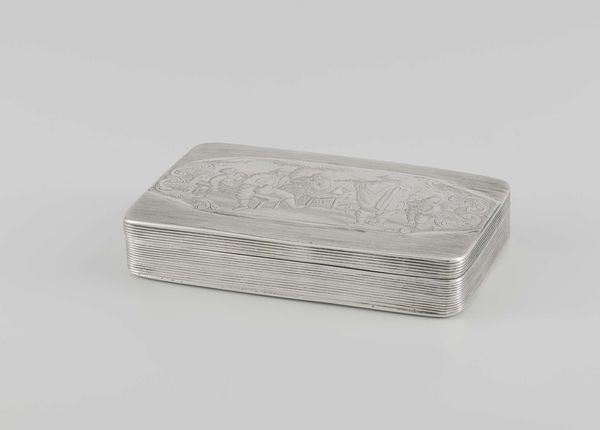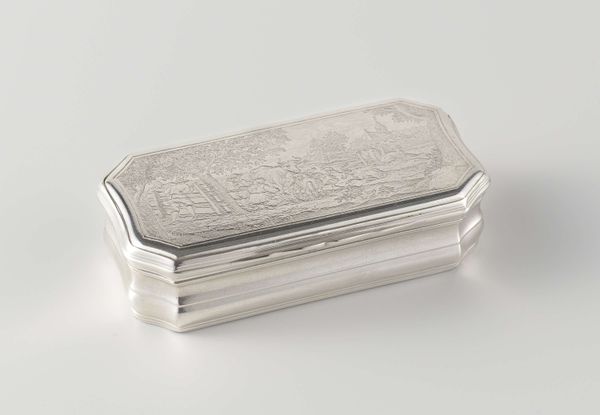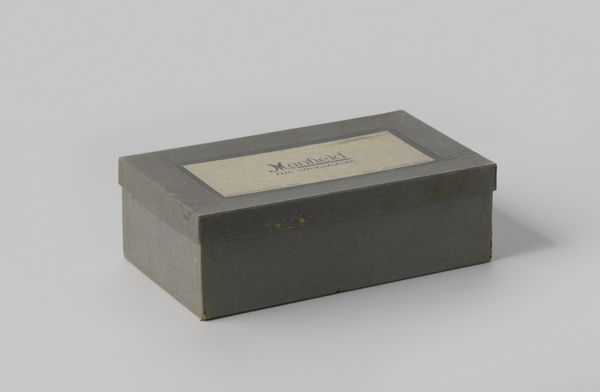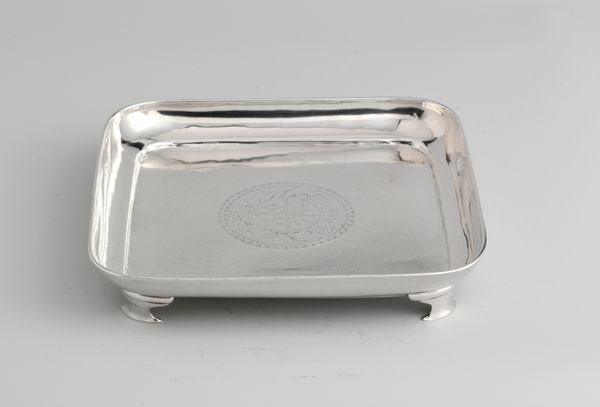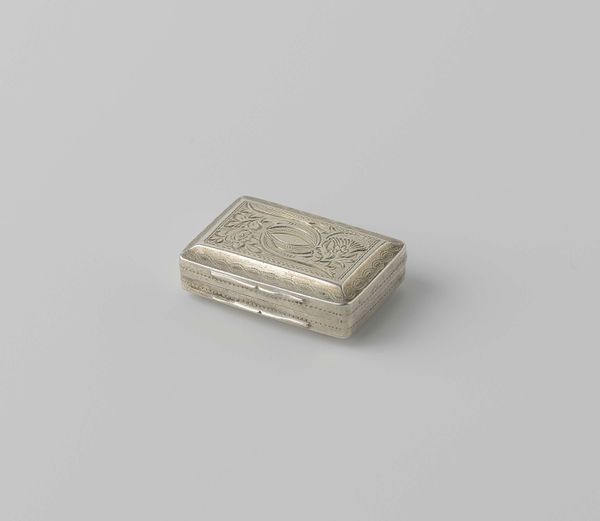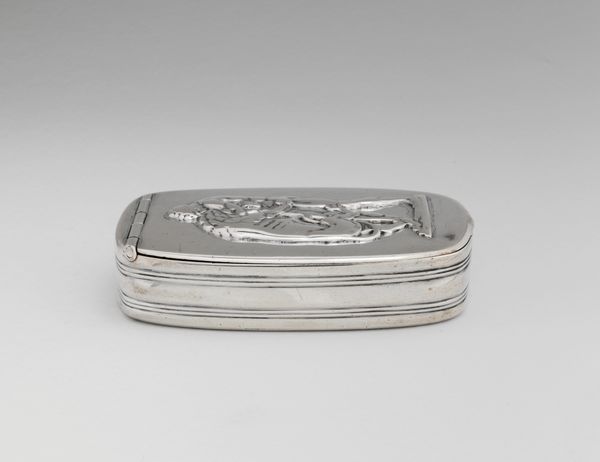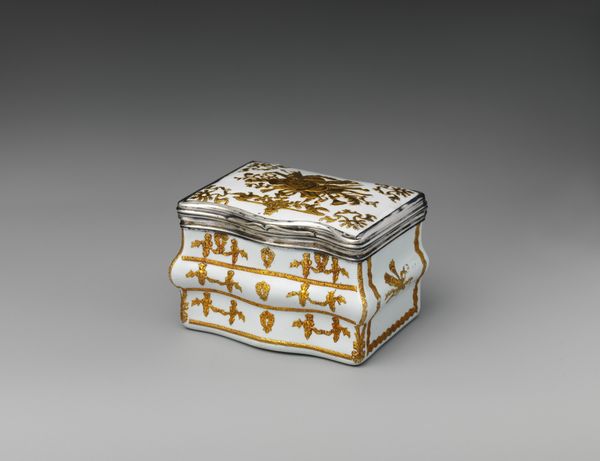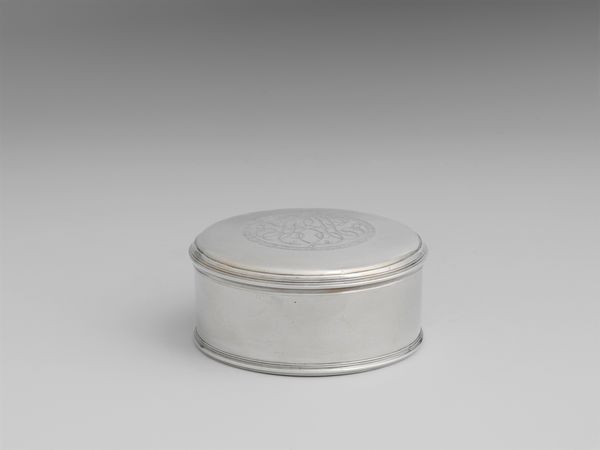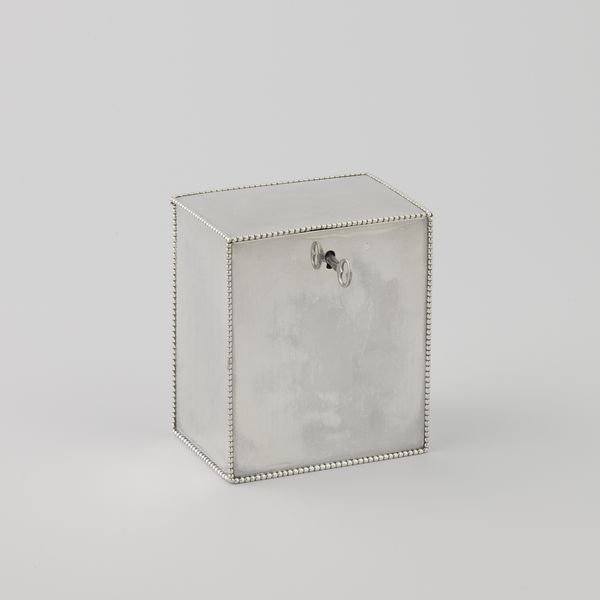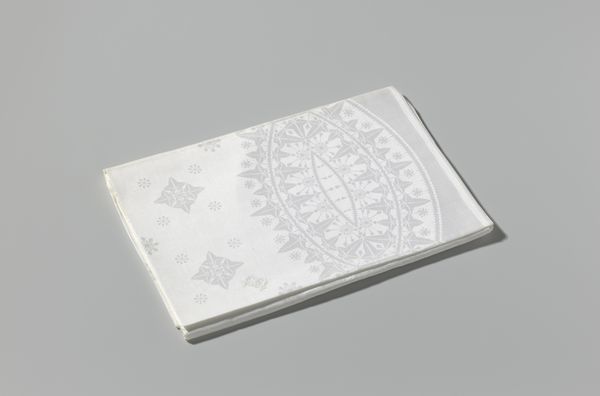
silver
#
silver
#
aesthetic-movement
#
decorative-art
Dimensions: 2.5 × 7.5 × 6.2 cm (15/16 × 2 5/16 × 2 7/16 in.)
Copyright: Public Domain
Curator: Look at this exquisite piece. The Whiting Manufacturing Company created this silver box sometime between 1881 and 1890, and it’s currently held at The Art Institute of Chicago. Editor: It has a somewhat austere beauty, doesn’t it? That plain, solid form of the box proper gives it an air of stoicism, almost, while those ornate decorations dance playfully above. There’s a tension there that holds your attention. Curator: Precisely! Those sinuous, swirling floral motifs are quintessential examples of Aesthetic Movement design. It embraced beauty for its own sake, drawing inspiration from nature and Japanese art, especially. Note how these forms, with their rhythmic curves, contrast against the stark geometry of the box itself. It really emphasizes a commitment to visual harmony, I think. Editor: Absolutely, but beyond the quest for ‘pure’ beauty, this type of ornamentation often spoke to deeper social currents. Consider the time. Mass industrialization was causing all sorts of anxieties, and pieces like this—emphasizing handcraft and artistry—were subtle forms of resistance against that tide. A sort of self-conscious opposition? Curator: A fascinating point! And in decorative arts, symbolism is frequently employed. Notice the floral arabesques? These motifs are almost totemic. Flowers symbolize growth, beauty, and even rebirth across various cultures, but the specific type could hold a wealth of specific meanings, indicating virtue or other values the owner wishes to express. Editor: Indeed, in a time when gender roles were incredibly proscribed, particularly for upper and middle class women, ownership of objects d’art became a tool to signal intellect and sensitivity – a form of silent but subversive communication. Curator: That contextual awareness provides a fuller appreciation. For the contemporary observer, it's essential to consider this history alongside the object's formal characteristics. Editor: Definitely. Objects never exist in a vacuum. By understanding these objects and their stories, we create space for a greater reflection on our cultural legacies. Curator: What a marvelous example of how something seemingly straightforward is a wellspring of cultural meaning. Editor: A perfect synthesis of function and aesthetics as a cultural marker.
Comments
No comments
Be the first to comment and join the conversation on the ultimate creative platform.
